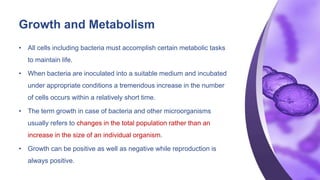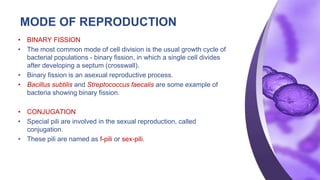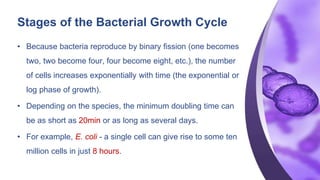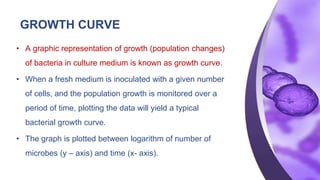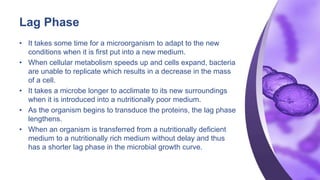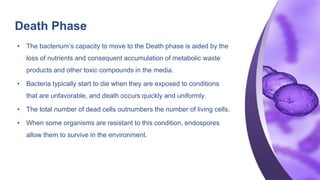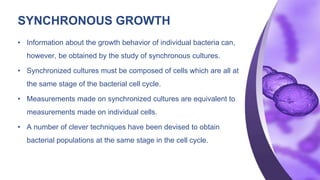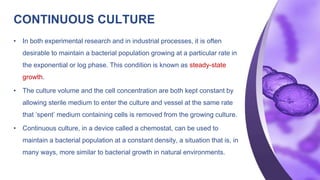Bacteria reproduce through binary fission, where a single cell divides into two daughter cells. This results in exponential growth of the bacterial population over time. A bacterial growth curve typically shows four phases: a lag phase as the bacteria adapt, an exponential or log phase of rapid growth, a stationary phase as resources are depleted, and a death phase. Continuous culturing techniques like chemostats can maintain bacteria in the log phase of growth through controlled dilution of the culture medium.

